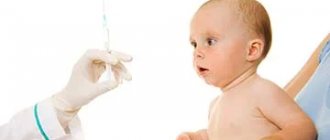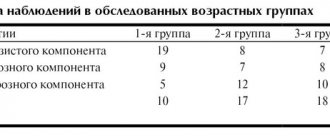Low-grade fever (low-grade fever) is a slight (37 - 37.9'C) increase in body temperature observed over a long period of time (from several weeks). It can be observed continuously throughout the day or occur at certain hours.
Low-grade fever is a symptom of many diseases, and therefore can coexist with different symptoms. In some cases, a persistent increase in temperature is the patient's only complaint. The most common companions of low-grade fever are increased heart rate, weakness, drowsiness, and lack of appetite.
Low-grade fever is primarily a consequence of the restructuring of thermoregulatory processes in the body. It is caused by an acceleration of metabolism or dysfunction of the thermoregulation center due to infectious, allergic or any other influences.
Important! Low-grade fever can be a symptom of a low-grade inflammatory process!
What is low-grade fever
Low-grade fever is a slight increase in body temperature above normal. Previously, this term was used quite actively, including abroad (low-grade fever), but now it is not in the international classification of diseases. Officially, the condition associated with an increase in body temperature sounds like fever of unknown origin. To make this diagnosis, the following conditions must be met:
- body temperature 38.3 °C and above;
- the duration of the condition is more than three weeks;
- unclear diagnosis after inpatient examination within a week.
A person's body temperature fluctuates throughout the day and changes depending on circumstances. The body under normal conditions maintains it within a certain range, regardless of environmental changes. Temperatures are usually a little higher in the evening, around 8:00 pm, and lower in the early morning. This is circadian type variability. The temperature recorded in the armpit ranges in a healthy person from 35.2 °C to 37 °C.
Indicators of the so-called subfebrile temperature are in the range of 37.1 - 38 °C. These values may be enough for a person to feel unwell, lack of strength, lack of appetite, drowsiness and discomfort in the body. But often the temperature is not accompanied by other symptoms, and in some cases its increase is considered normal. It should be noted that all of these symptoms are nonspecific and can occur without connection with an increase in body temperature.
Unlike high fever, an increase in body temperature of 1–2 degrees is not dangerous for the body. Low-grade fever does not lead to deformation of protein molecules and cell death. The norms for the duration of this state of the body are determined by the doctor.
2. Reasons
There are a great many reasons for an increase in temperature, many of which are purely situational, but in this case, low-grade fever is always transient in nature and passes more or less quickly. These are, for example, temperature fluctuations during the day (slightly higher in the evening), in response to intense physical activity, overheating, a stressful situation, or (in women) the ovulation phase of the cycle.
An increase in temperature is one of the most common, almost always occurring reactions to an infection, no matter what pathogen it is caused by; Accordingly, persistent low-grade fever often turns out to be a symptom of a chronic infectious-inflammatory process, with which the immune system has entered into a kind of “clinch” without a clear “winner.”
The causes can also be HIV/AIDS, oncological processes, endocrine disorders (usually thyroid pathology), autoimmune diseases, asthenic conditions after an illness, anemia, viral hepatitis, chronic inflammation of the structures of the nasopharynx, kidneys, reproductive system, etc.; eroding and ulcerating diseases of the gastrointestinal tract, parasitosis, cardiovascular pathology, taking certain medications.
Visit our Therapy page
Symptoms of low-grade fever
In some cases, a rise in temperature to 37 can be caused by weather, diet, stress and other minor changes, in others it is a symptom of disease. Look out for the following signs:
- the temperature systematically rises and falls over several days for no apparent reason;
- you do not have ARVI or exacerbation of chronic diseases, there is no pain, runny nose, cough or other symptoms of disease;
- you have not been immunized or taken new medications;
- there were no shocks associated with stress, you eat well and get enough sleep.
If all the criteria are met, and the temperature continues to remain above 37 °C, this is a reason to consult a therapist. Especially if you notice in yourself:
- neoplasms (nodules) on the skin;
- swollen lymph nodes;
- bruises that appeared from nowhere;
- severe loss of appetite;
- rash;
- muscle joint pain;
- problems with the gastrointestinal tract.
The doctor will examine your medical history and complaints, and then prescribe the necessary tests and examinations.
Causes of low-grade fever
An examination by a specialist is necessary because an elevated temperature can be a sign of a wide range of illnesses, ranging from minor to very serious. Thus, a temperature of 37–38 °C is typical for:
- overheating of the body (due to hot weather, inappropriate clothing, in a bath or sauna), heat stroke;
- teething in infants (in this case the temperature rises to higher levels, which is normal);
- vaccinations (the body's natural immune response);
- side effects from certain medications.
You can read the continuation of the article by following the link to RBC Style.
The main diseases manifested by low-grade fever:
- Chronic infectious diseases (chronic tuberculosis, brucellosis, sinusitis, pyelonephritis, parasitic lesions, cytomegalovirus, herpes, mononucleosis, sexually transmitted diseases and many other focal infections in a chronic form);
- Diseases associated with impaired immune response (rheumatism, rheumatoid arthritis, vasculitis, post-infarction syndrome). This group also includes diseases of an allergic nature;
- Malignant neoplasms (leukemia, lymphoma, hepatoma, kidney adenocarcinoma, etc.);
- Diseases of the endocrine system ( pathological menopause, thyrotoxicosis, pheochromocytoma, etc.);
- Diseases of the central nervous system of various etiologies ( traumatic brain injuries, neuroinfections, etc.).
Low-grade fever in children, especially young children, often has no connection with any pathology. It occurs due to the body’s thermoregulation not yet established. Children's body temperature rises after physical activity, overheating, and in infants after eating.
One of the common causes of persistent low-grade fever is psychological and mental stress, as well as stress, accompanied by general poor health, dizziness, and shortness of breath.
How to alleviate the child's condition?
Several recommendations will help your child cope with this unpleasant condition. They are aimed at increasing heat transfer and reducing heat production. In practice, this can be done as follows:
- provide the child with bed rest or a minimum of physical activity;
- try to control the child’s emotions, screams and tantrums contribute to an increase in temperature;
- feed the child as desired, do not insist on feeding if he does not want to eat;
- Monitor the temperature of food, it is also better to avoid hot drinks (no more than 40°C);
- maintain an optimal climate in the room, namely about 20° (+/-2°);
- Give your child plenty of drink, it can be water, compote, juice, tea with raspberries.
These tips will help your child cope with low fever. However, parents should monitor the situation so that if the child’s condition worsens, they can take adequate measures.
Taking medications
The temperature may also increase while taking medications. You should read the instructions; usually the side effects indicate the possibility of increasing it. Some drugs can also inhibit beneficial microflora. This is especially true for medications that have an effect on the nerves.
Other reasons
Other reasons are as follows:
- Intestinal disorders.
- Malfunctions of the endocrine system.
- Autoimmune processes (connective tissue diseases).
- Tumors.
Diagnostics
Since there are many causes of low-grade fever, you need to undergo a whole range of tests to determine the cause. After complaining to the doctor about low-grade fever, you need to do the following:
- Blood analysis. Helps determine the presence of infections or liver damage.
- Bacterioscopy. Not only blood is donated, but also a smear of the mucous systems. Helps determine the presence of bacteria.
- Tests for serological reactions. They help find pathogens of intestinal diseases and acute respiratory viral infections.
- Sonography. Evaluates the condition of the internal organs of the abdominal cavity, joints and endocrine glands.
- X-ray imaging. Helps identify lung problems.
- Invasive research. If the infection concerns the skin.
- Clarifying methods. Determines menopause, pregnancy or allergies.
Classification
Body temperature up to 39°C is considered elevated. She may be:
- subfebrile - no more than 38.0°C;
- febrile - from 38.1 to 39.0°C.
If the temperature rises above 39.1°C, it is considered high (pyretic up to 41°C and hyperpyretic above 41°C).
Body temperature becomes elevated when pyrogens appear in the blood. These may be components of infectious agents or substances whose production is regulated by the immune system. An increase in temperature is most often a normal defensive reaction, and therefore it is not always necessary to bring it down.
How to diagnose and how to treat?
As a rule, diagnostic measures for a child with a complaint of low-grade fever include hardware and laboratory research methods:
- examination of ENT organs using appropriate instruments;
- blood test: general, serological and biochemistry;
- sputum examination;
- if necessary, radiography and CT;
- Ultrasound diagnostics;
- echocardiography.
Based on the results of a comprehensive examination, the otolaryngologist makes a diagnosis and makes appropriate prescriptions.
Residents of Kaliningrad can make an appointment with a pediatric otolaryngologist by filling out a preliminary application on our website or calling: +7 (4012) 357-773 or +7 (4012) 973-100.
Fever and menstrual cycle
In women, body temperature is interconnected with the menstrual cycle and hormonal fluctuations. During ovulation, symptoms of low-grade fever may occur, which persist until the onset of menstruation. This is an individual physiological norm. In some women, low-grade fever is accompanied by pregnancy. Most often this occurs in the first trimester, which is due to increased production of progesterone. This hormone affects the thermoregulation center in the brain. That is why in pregnant women the temperature can rise to 37.2-37.40C. According to statistics, a similar phenomenon occurs in 3-5% of women. Most often, low-grade fever during pregnancy is accompanied by drowsiness, fatigue, and changes in appetite. By 12-14 weeks the situation will normalize.
If low-grade fever during pregnancy is not associated with infection, the increase does not have a negative effect on the development of the fetus. If there are complaints or alarming symptoms, a pregnant woman should undergo an examination to determine the cause of poor health.
Treatment
Until the cause of the elevated temperature is determined, etiological treatment is not carried out; only symptomatic therapy (use of antipyretic drugs) is possible if the patient’s condition is unsatisfactory. Typically, symptomatic treatment of low-grade fever is not carried out, since the temperature is not dangerous, and the prescription of antipyretics makes diagnosis difficult. The prescription of antipyretic drugs at temperatures up to 38 C is indicated only for persons at high risk and with severe concomitant pathology:
- diseases of the cardiovascular system, especially in the stage of decompensation;
- pregnancy;
- tendency to hyperpyretic reactions;
- young children prone to seizures.
When chronic inflammatory foci are identified, antibacterial therapy is carried out. For functional disorders of the central nervous system, which are manifested by impaired heat exchange, the following is used:
- Psychotherapy and cognitive behavioral therapy.
- Hypnotherapy, in which normalization of heat exchange is possible in 10–15 sessions.
- Autogenic training.
- Acupuncture.
- Sedatives (bromine preparations, glutamic acid, Aminazine). Glutamic acid is prescribed to young children, Aminazine - to adults and older children.
- Psychotropic drugs for emotional and personality disorders.
- Complex treatment includes the correct daily routine, alternation of work and rest, proper sleep, and walks in the air.
Medicines
- Antipyretics: Paracetamol , Ibuprofen , Panadol , Efferalgan , Nurofen .
- Sedatives, tranquilizers: alora , Novo -Passit , seden , sedafiton , valerian Forte , nervorm , notta , glycine , glycated , noobout person , donormil , quattrex , elenium , sibazon , relanium , nosepam , mesapam , oremik , dormicum .
Procedures and operations
Surgical interventions are carried out according to indications.









